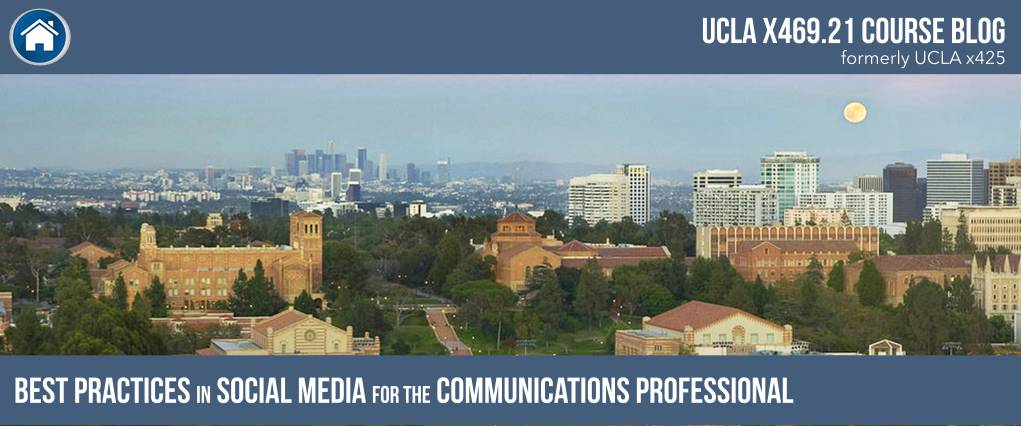
Week 1: A Conversation with Guest Speaker Clint Schaff by Cristina Nissen
By UCLA X469.21 Student Cristina Nissen
Talking about yourself is easy (or, at least, it should be), but how do you engage others in your life story without boring them beyond belief? Clint Schaff did exactly that with his self-introduction to our class, as he told us (his audience) to “Next” him whenever he talked for too long about one aspect of his background. Hearing about Clint’s life story in this unique way got our attention and kept us involved. It is also important to note that he kept the text on each of his slides to a minimum, so as to not overwhelm us.
Clint transitioned from his intro to discuss how to capture an audiences’ attention using social media. He said it’s all about storytelling, and ultimately evolving that storytelling into storymaking.
In storytelling, you simply talk about what happened (meh), but in storymaking, you talk about the stories people create and share with one another. It becomes more personal, more intimate, and therefore more engaging.
Clint also gave us a shortcut for remembering the steps required to reach and engage an audience via the acronym “POST,” where P stands for the people you want to reach, O stands for your objectives (what do you want to accomplish), S stands for strategies (listening, talking, energizing, supporting and embracing), and T stands for tactics (the specific tools and technologies you’ll use).
The main focus of Clint’s presentation was “How to Build Your Social Media Playbook.” A playbook is a resource for brands to keep their social media efforts consistent and on-track. He said it should include the following items: social media goals and objectives, overall style (look and feel), brand essence and character, tone of voice, content theme, and distribution platforms. All these factors affect how your audience perceives your brand.
As a summary, Clint touched on a few overall “Dos” and “Don’ts” as guiding principles. The Dos include spreading out content throughout the day, responding to audiences in a timely manner, strategically guiding conversations around planned content, and engaging with relevant non-brands and influencers. The Don’ts (which are obvious and seem like common sense when posting on behalf of a business) include not posting content that’s likely to alienate a portion of your audience, not reposting content from questionable sources, and not getting caught up in short-term issues/trends “just because.” These Dos and Don’ts are important guidelines to keep in your back pocket when posting on social media.

